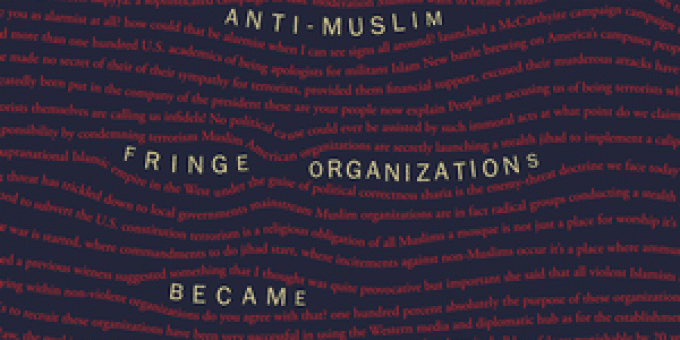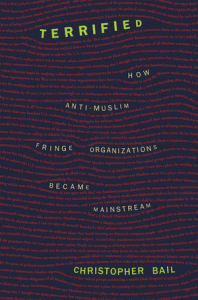
Terrified
 According to the concept of resonance, civil society organizations spur cultural change at critical moments with messages that evoke the larger culture’s prevailing themes. In his new book Terrified: How Anti-Muslim Fringe Organizations Became Mainstream, sociologist Christopher Bail challenges this view, which he says mostly reflects a focus on successful movements and overlooks the countless organizations that have tried the same strategy unsuccessfully. To advance his alternative, evolutionary theory, Bail uses a mixed-methods approach to analyze how anti-Muslim fringe organizations became part of the mainstream in the post-9/11 world.
According to the concept of resonance, civil society organizations spur cultural change at critical moments with messages that evoke the larger culture’s prevailing themes. In his new book Terrified: How Anti-Muslim Fringe Organizations Became Mainstream, sociologist Christopher Bail challenges this view, which he says mostly reflects a focus on successful movements and overlooks the countless organizations that have tried the same strategy unsuccessfully. To advance his alternative, evolutionary theory, Bail uses a mixed-methods approach to analyze how anti-Muslim fringe organizations became part of the mainstream in the post-9/11 world.
Using plagiarism detection analysis programs to analyze text, Bail studied media messages before and after the 9/11 attacks. He also analyzed data from Facebook and Twitter to get direct measures of fringe organizations’ influence on the larger American public. Prior to 9/11, anti-Muslim organizations in the U.S. were few and had little effect on the largely non-existent cultural narrative regarding Muslims and Islam. After 9/11, the media amplified these once-fringe organizations.
The rise of anti-Muslim rhetoric in the media and the media attention these organizations got, Bail finds, helped such groups develop new network ties to raise money and gain new legitimacy as “terrorism experts.” Eventually, this influence translated into political power. Contrary to the resonance argument, these fringe organizations created rather than responded to prevailing cultural themes.
